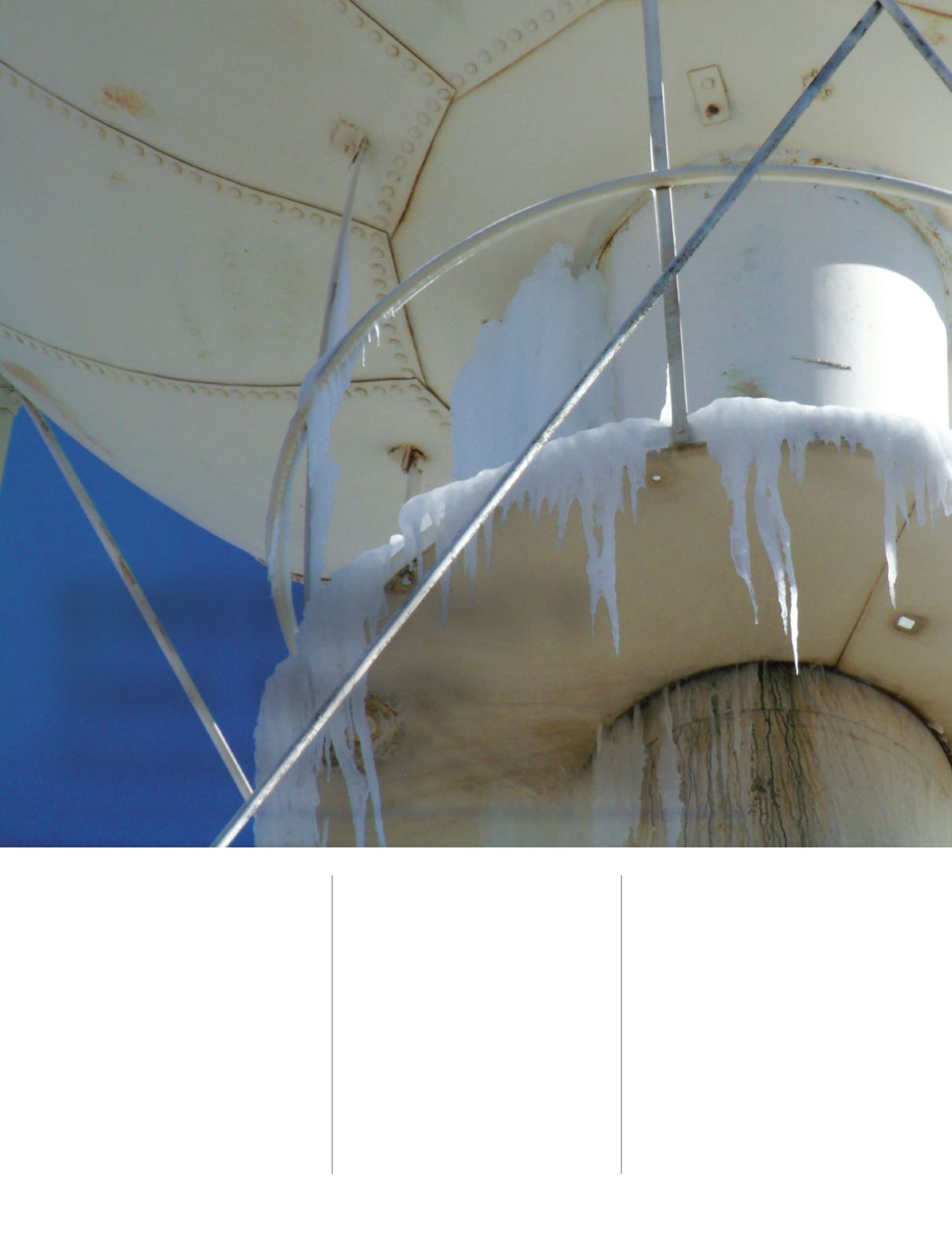
D
20
|
Winter 2014
feature
rinking water tanks are surrounded by threats
daily, but most problems associated with
emergency tank repairs can be prevented.
Extra time and maintenance may be needed
to ensure the tank is protected, and water
operators should have an effective plan to
restore water services if a tank emergency
does occur.
Most problems that lead to emergency
tank repairs can be prevented with proper
maintenance and regular inspections.
Obtaining accurate information and saving
the documentation of every inspection
and repair can enable a deeper level of
understanding about the tank’s history. The
knowledge gained from its history can then be
used to help create a more effective strategy
in preventing and limiting future tank repairs.
Harsh winter weather often increases the
risk for tank damage and emergency repairs.
Last winter, several drinking water tanks
nationwide experienced damage, leaks, and
failures as a result. A Minnesota tank froze
twice over the winter because of the prolonged
deep freeze.
(1)
And, according to
The Old
Farmer’s Almanac’s
for 2014-2015, “this
winter will be another arctic blast with above-
normal snowfall throughout much of the
nation.” Therefore, measures should be taken
now to protect the tanks and help prevent
damage that could be caused by snow, ice and
freezing temperatures.
Drinking water tanks are more susceptible
to freeze during nighttime hours when water
demand and turnover rate is low. Moving
water is less prone to freezing, so keeping
the turnover rate high or adding a mixing
system can help. The National Fire Protection
Association (NFPA) recommends maintaining
EMERGENCY
Tank Repair
Prevention & Preparation
By Erika Henderson, Director of Research, Pittsburg Tank & Tower, Inc.


